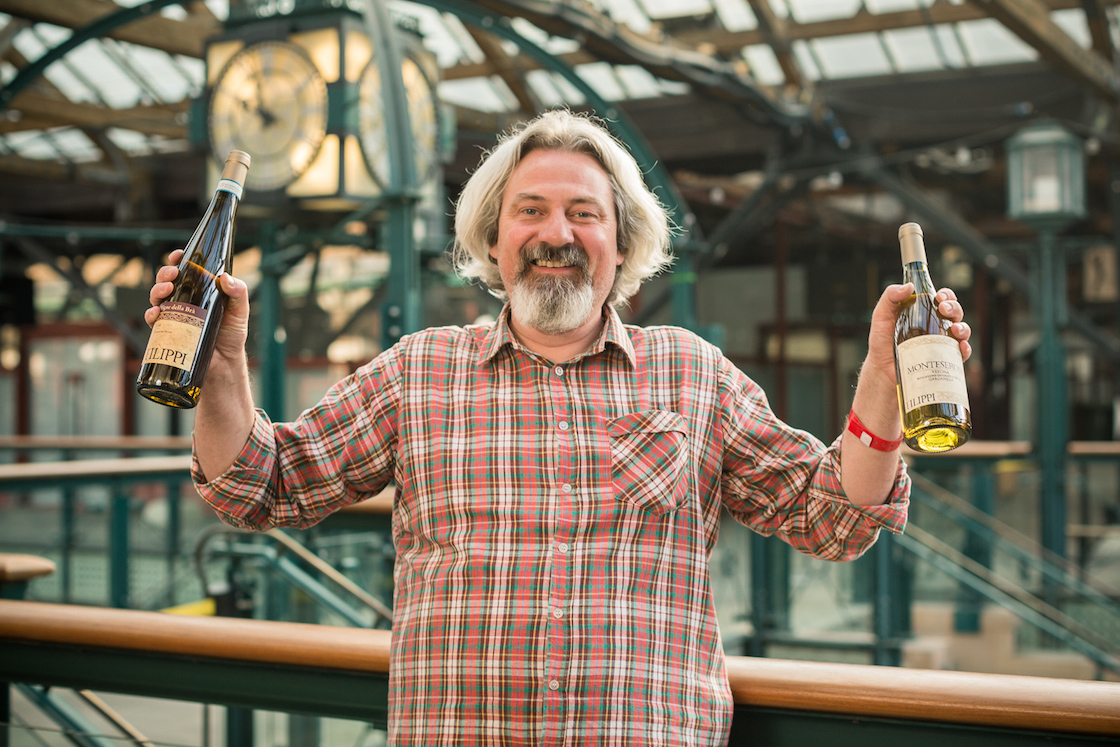Soave is normally not sophisticated. At worst it may be a sulphurous travesty and even the better examples tend to be neutrality personified with all the fruit of the thinnest nib of a blanched almond.
Filippi’s estate and vineyards are located in Castelcerino, in the highest part of the Soave DOC. The property was owned by a noble Tuscan family, the Conti Alberti, from the 1300’s to the beginning of the twentieth century. In the beginning of the 1900’s they sold the villa and cantina to the Visco family. Filippo Filippi, who runs the estate, represents the current generation of the family. His mother’s maiden name is Visco so Filippo is related to both families – the Visco and the Conti Alberti.

Filippi began bottling his own wine in 2003 but his family has been making wine since the Visco family bought the estate from the Alberti. He began farming organically and was certified organic in 2007. Over the years, he’s incorporated some principles of biodynamic farming as well. The soil in the vineyards is mostly rocky, volcanic clay with parts that are rich in limestone (particularly the Vigne della Bra). The property and vineyards are unique in that there is a rich biodiversity including wooded areas surrounding the vineyards. This is a critical aspect to the estate’s practices, as it allows for the vineyards to exist in harmony with the surrounding nature.
The volcanic nature of the basaltic rock along with the calcareous soils which gave origin to the terrain and assures sapidity and particular salinity to these remarkable wines. The Filippi vineyards in Castelcerino are 320-400 metres above sea level (the highest in the region) and the presence of the nearby forest creates an ideal micro-climate which is always ventilated and characterised by good temperature differential between day and night. All this contributes to the persistence of perfumes and aromas in the wine. And these are superb wines with beautiful definition and minerality and a naturalness which is at odds with the convention of the region. The Soave Castelcerino, from hand-harvested vines with an average age of 60 years, is fermented in stainless steel with ambient yeast and ages on the lees in stainless steel for 4-6 months before bottling. This is a mineral-charged wine with tensile acidity, pronounced aromas of apple blossom and ginger, and is perfect with grilled white fish. Vigne del Bra is a cru quality 70-year-old vineyard at 400m above sea level, south-west facing on rocky clay soils over limestone. Also fermented in stainless steel, it is subsequently aged for 20 months on the lees. There is an extra dimension to the minerality here and a greater richness in the mouth. The Trebbiano Turbiana is a young vineyard planted in a clearing in the forest, planted using cuttings of old vine Trebbiano di Soave found among their Garganega vines in the Vigne della Bra. Vinified with natural yeast in stainless steel and then aged for six months on the lees. Vibrant golden colour with a yeasty nose of brioche and almond pastry. The wine unfolds to reveal expansive aromas of honeydew melon, peach and mango. The ensemble is completed by a sensation of concentration and finesse. Monteseroni, our latest Soave from this estate, is a very limited production white that is based on 100% Garganega that comes from Filippi’s warmest site, his south-exposed Monteseroni vineyard at 350 metres. Consisting mostly of calcareous soils, this parcel is named after the dialect referring to wild roosters that used to inhabit the mountainous terrain. The resulting golden-hued wine is fermented and matured in stainless steel tanks, resting for a minimum of six months on the fine lees before bottling and release. Its aromatics are somewhat shy, requiring some coaxing, in contrast to the palate that shows immediacy and full disclosure in its round, rich, enveloping quince, apricot and spice notes.

